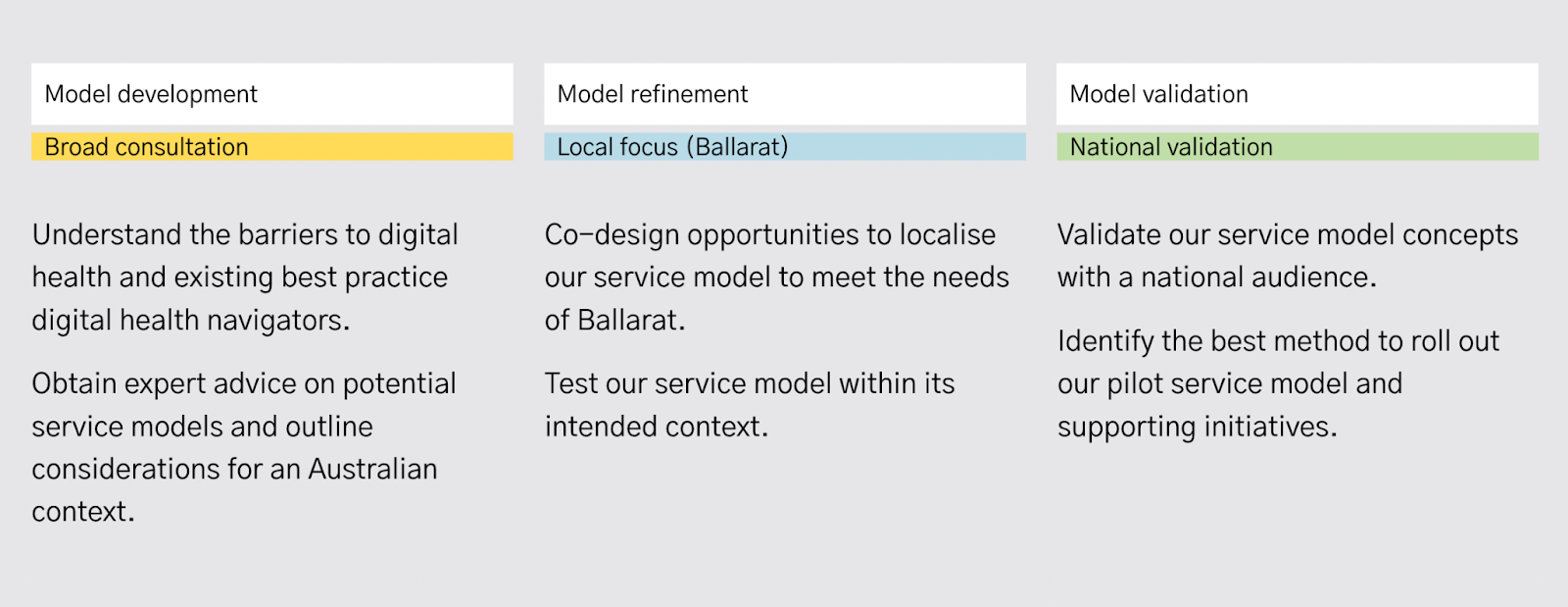Last year we launched Daybreak—an accelerator of impactful innovation ideas. We wanted to reimagine care by supporting a not-for-profit with $160,000 of in-kind services.
A few weeks ago, we announced that we’re partnering with Good Things Foundation Australia and Consumers Health Forum of Australia .
We wanted to try something new, and share updates from the project as it progresses rather than just at the end. So we’ll be posting after each showcase, to share our learnings, interesting findings, and to open up what a project at Today looks like.
If you’re interested in attending our final showcase webinar, register to join here .
A little about the project
Challenge
One in four Australians have been identified as digitally excluded, yet digitisation of services in our health system continues to expand.
Project goal
Create a scalable service model for digital health navigators in Australia, which increases confidence, uptake and usage of the right digital tools to improve health self-management
What happened in sprint one and two?
- We aligned as a project team on our ambitions and research plan. We did this by mapping our complete stakeholder environment and setting an engagement plan.
We do this to make sure the project team consults and informs the right people to ensure the outcomes we arrive at, have longevity and can create real change. - We designed a research approach, and planned, validated and began recruitment. You can view our research approach below.
- We completed a landscape review, taking into account all the research available to us, including innovative successful models in other countries.
- We started one-on-one expert interviews to validate current understandings of digital health navigators.

Research approach
What have we learned so far?
- Digital health navigators have been successfully installed in different health settings globally, where learnings can be adapted to an Australian healthcare setting.
- Regional hubs offer an environment with an optimal sample to co-design solutions to overcome digital health barriers.
- Digital health technology offers many exciting possibilities for the future of healthcare. However, it must not be seen as a substitute for in-person care.
- Equity is plaguing the success of digital health. With those who are most dependent on the healthcare system finding it hardest to gain access to it as the systems digitisation continues.
- Healthcare providers are still yet to buy into digital health. In more extreme cases providers are suggesting their patients avoid it altogether.
- The lack of participation with the My Health Record from the healthcare community is resulting in incomplete records. Ultimately not realising its potential and affecting the program's credibility.
- The variety of digital barriers means that a one-size-fits-all solution will not work for Australia.
Where to next?
Over the next few weeks, we want to generate a hypothesis service model for digital health navigators. We will do this by:
- completing our initial research, interviews and workshops, and
- synthesising, generating and iterating service model concepts.
We’re excited to step into the interview and workshop phase of the project. We’ll be back to share more in a few weeks!
